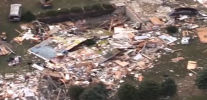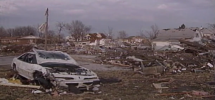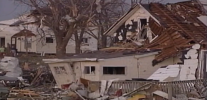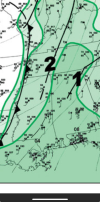Today marks the 20 year anniversary of a tornado outbreak that helped fuel my life long passion for severe weather. 12 tornadoes struck central Iowa and 3 of them were significant.
It was an exceptionally rare outbreak.
The Nov. 12, 2005, tornadoes were Iowa's first November tornadoes in 14 years and the largest November outbreak up to that point in history.
Prior to that day, only 23 November tornadoes had been recorded in the state since 1950.
Of the dozen twisters in this outbreak, three also achieved F2 or greater intensity. Two of those significant tornadoes were on the ground simultaneously, and both struck towns.
Iowa's next November tornadoes would come almost exactly 10 years later on Veterans Day 2015.
Saturday November 12th 2005 started with the Stratford, Iowa F3



At the same time an F2 tornado struck Woodward, Iowa, and this legendary video was recorded. The outbreak was later featured on the Weather Channel show "Storm Stories".




 www.kcci.com
www.kcci.com
It was an exceptionally rare outbreak.
The Nov. 12, 2005, tornadoes were Iowa's first November tornadoes in 14 years and the largest November outbreak up to that point in history.
Prior to that day, only 23 November tornadoes had been recorded in the state since 1950.
Of the dozen twisters in this outbreak, three also achieved F2 or greater intensity. Two of those significant tornadoes were on the ground simultaneously, and both struck towns.
Iowa's next November tornadoes would come almost exactly 10 years later on Veterans Day 2015.
Saturday November 12th 2005 started with the Stratford, Iowa F3



At the same time an F2 tornado struck Woodward, Iowa, and this legendary video was recorded. The outbreak was later featured on the Weather Channel show "Storm Stories".




20 years ago: Iowa's deadly Nov. 12, 2005, tornado outbreak
Wednesday marks 20 years since Iowa’s rare November 2005 tornado outbreak, when 12 twisters struck the state, killing one person and damaging dozens of homes.

